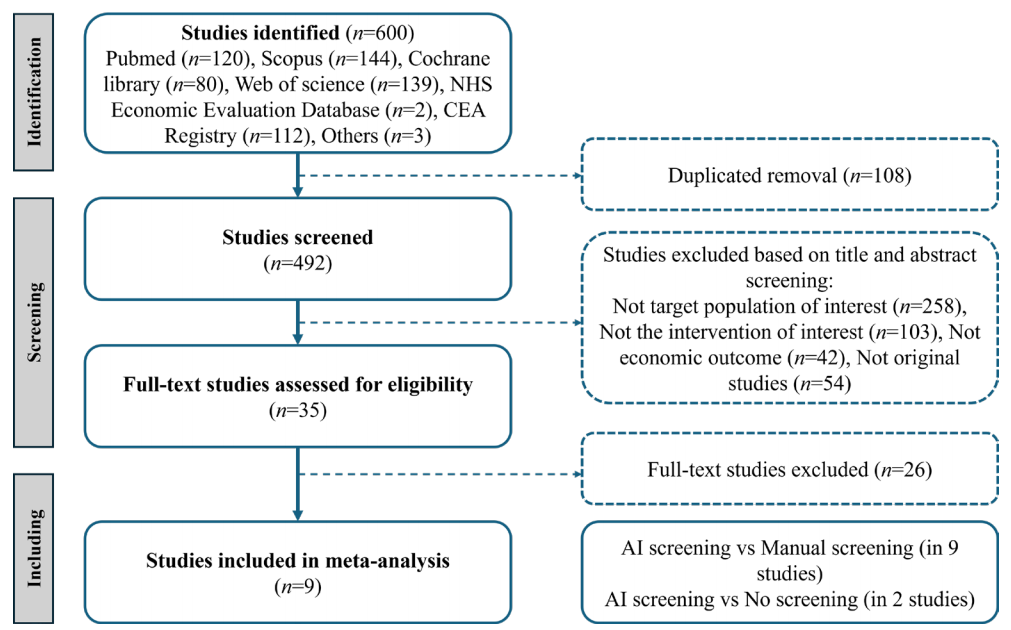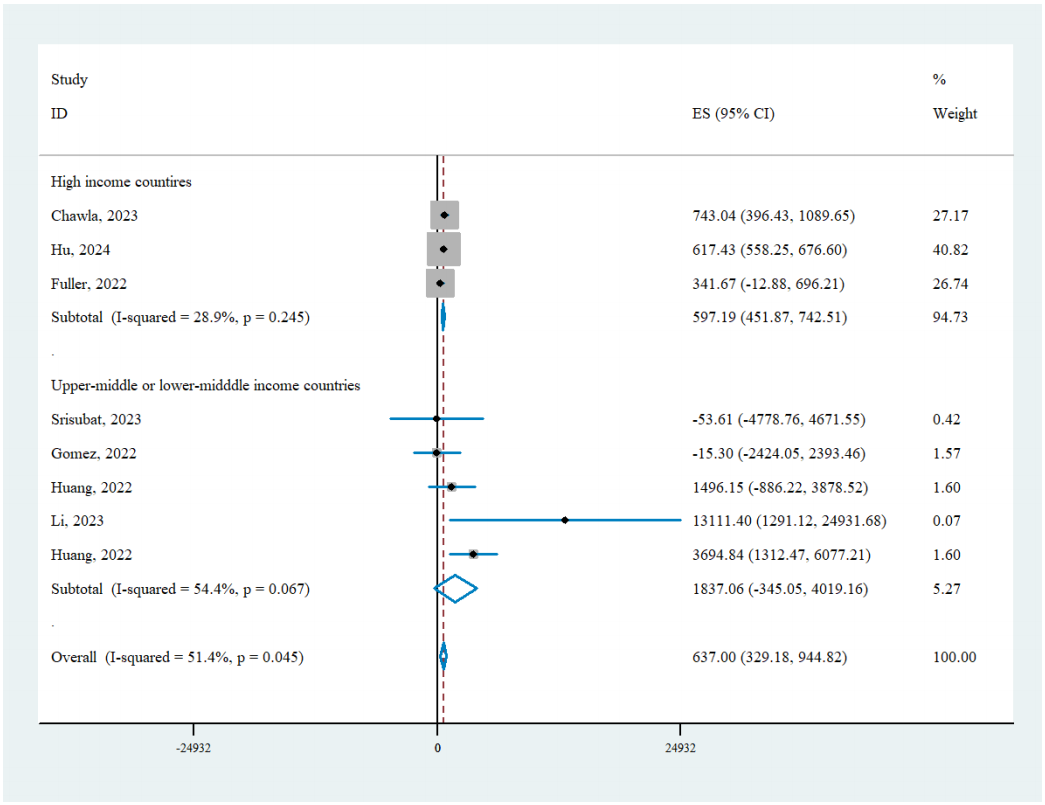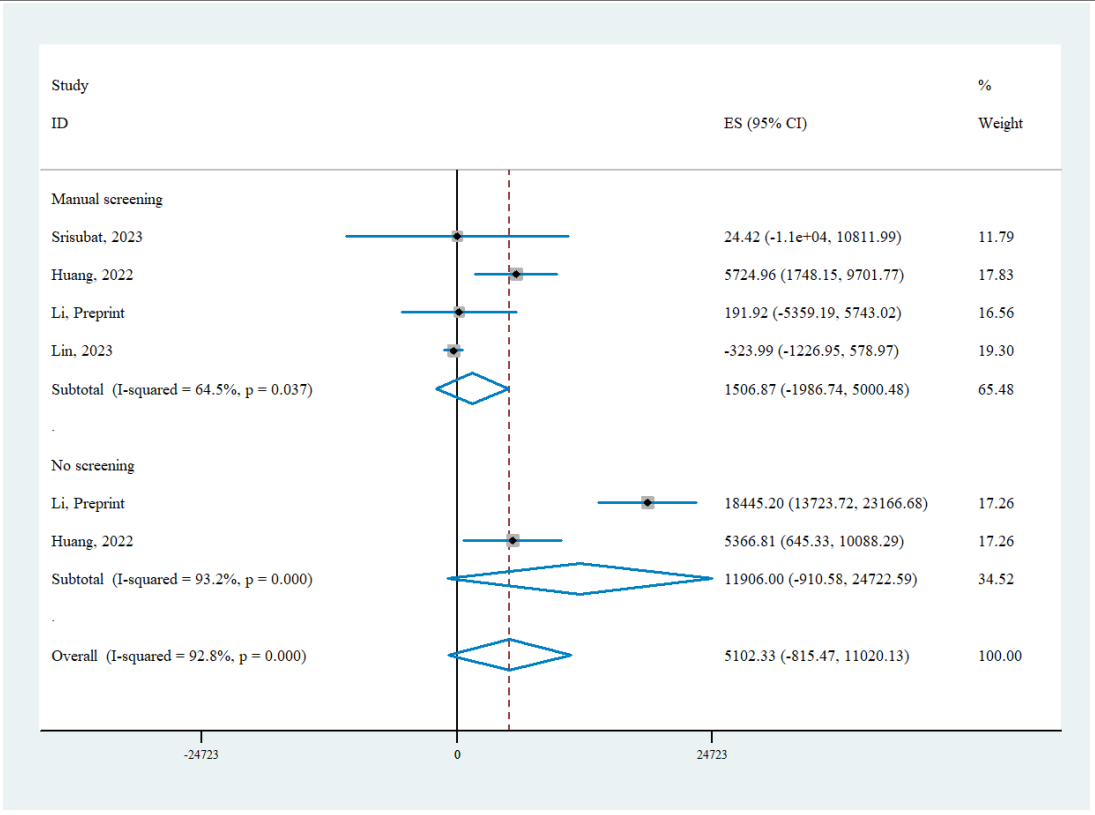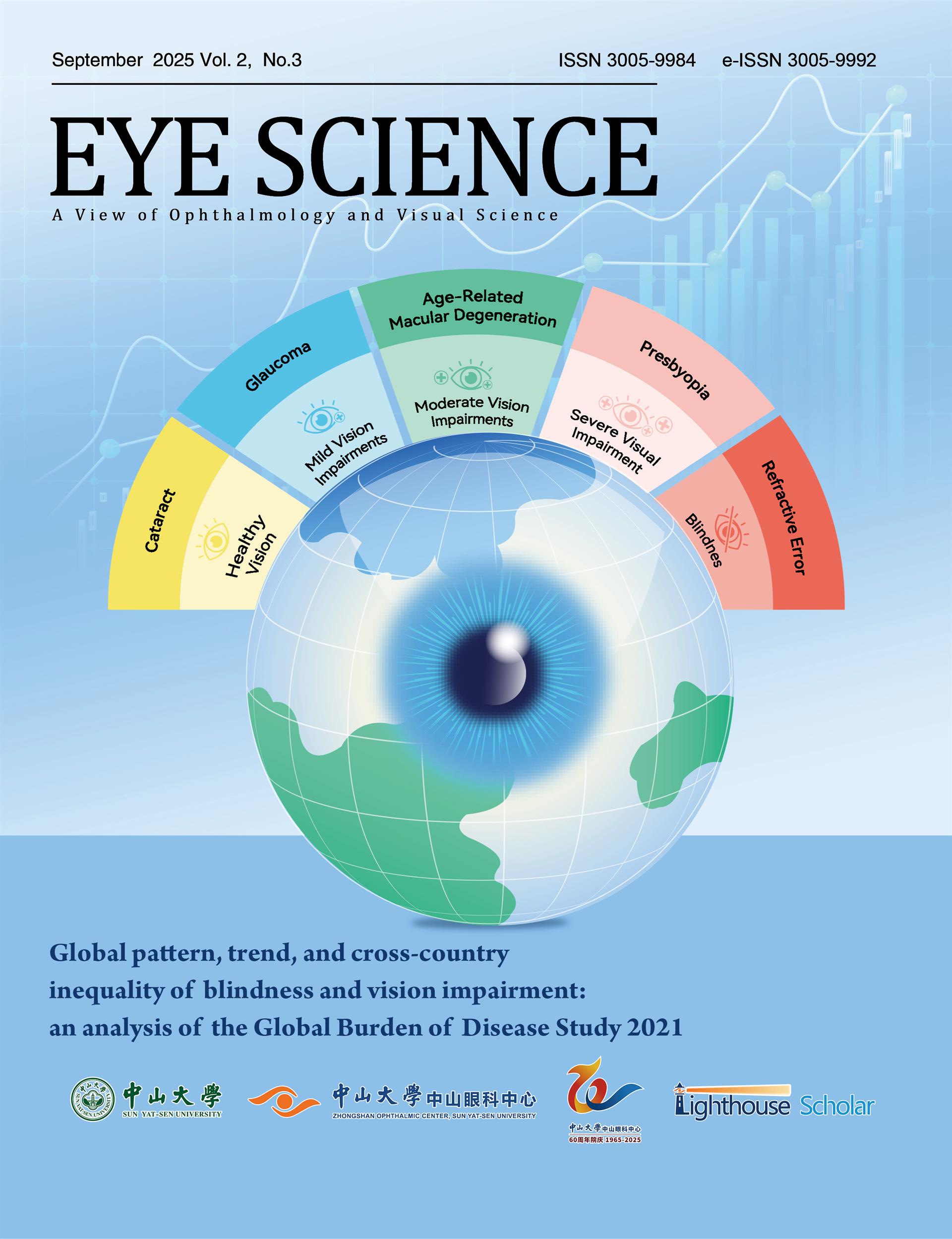1、Liu H, Li R, Zhang Y, et al. Economic evaluation of
combined population-based screening for multiple
blindness-causing eye diseases in China: a cost-effectiveness analysis. Lancet Glob Health. 2023, 11(3):
e456-e465. DOI: 10.1016/S2214-109X(22)00554-X.Liu H, Li R, Zhang Y, et al. Economic evaluation of
combined population-based screening for multiple
blindness-causing eye diseases in China: a cost-effectiveness analysis. Lancet Glob Health. 2023, 11(3):
e456-e465. DOI: 10.1016/S2214-109X(22)00554-X.
2、Lundeen EA, Burke-Conte Z, Rein DB, et al. Prevalence of
diabetic retinopathy in the US in 2021. JAMA Ophthalmol.
2023, 141(8): 747-754. DOI: 10.1001/jamaophthalmol.
2023.2289.Lundeen EA, Burke-Conte Z, Rein DB, et al. Prevalence of
diabetic retinopathy in the US in 2021. JAMA Ophthalmol.
2023, 141(8): 747-754. DOI: 10.1001/jamaophthalmol.
2023.2289.
3、Teo ZL, Tham YC, Yu M, et al. Global prevalence
of diabetic retinopathy and projection of burden
through 2045: systematic review and meta-analysis.
Ophthalmology. 2021, 128(11): 1580-1591. DOI: 10.1016/
j.ophtha.2021.04.027.Teo ZL, Tham YC, Yu M, et al. Global prevalence
of diabetic retinopathy and projection of burden
through 2045: systematic review and meta-analysis.
Ophthalmology. 2021, 128(11): 1580-1591. DOI: 10.1016/
j.ophtha.2021.04.027.
4、Grzybowski A, Brona P, Lim G, et al. Artificial intelligence
for diabetic retinopathy screening: a review. Eye (Lond).
2020, 34(3): 451-460. DOI: 10.1038/s41433-019-0566-0.Grzybowski A, Brona P, Lim G, et al. Artificial intelligence
for diabetic retinopathy screening: a review. Eye (Lond).
2020, 34(3): 451-460. DOI: 10.1038/s41433-019-0566-0.
5、He J, Cao T, Xu F, et al. Artificial intelligence-based
screening for diabetic retinopathy at community hospital.
Eye (Lond). 2020, 34(3): 572-576. DOI: 10.1038/s41433-
019-0562-4.He J, Cao T, Xu F, et al. Artificial intelligence-based
screening for diabetic retinopathy at community hospital.
Eye (Lond). 2020, 34(3): 572-576. DOI: 10.1038/s41433-
019-0562-4.
6、Li J, Guan Z, Wang J, et al. Integrated image-based deep
learning and language models for primary diabetes care.
Nat Med. 2024, 30(10): 2886-2896. DOI: 10.1038/s41591-
024-03139-8.Li J, Guan Z, Wang J, et al. Integrated image-based deep
learning and language models for primary diabetes care.
Nat Med. 2024, 30(10): 2886-2896. DOI: 10.1038/s41591-
024-03139-8.
7、Lee AY, Yanagihara RT, Lee CS, et al. Multicenter, head�to-head, real-world validation study of seven automated
artificial intelligence diabetic retinopathy screening
systems. Diabetes Care. 2021, 44(5): 1168-1175. DOI:
10.2337/dc20-1877.Lee AY, Yanagihara RT, Lee CS, et al. Multicenter, head�to-head, real-world validation study of seven automated
artificial intelligence diabetic retinopathy screening
systems. Diabetes Care. 2021, 44(5): 1168-1175. DOI:
10.2337/dc20-1877.
8、Xie Y, Nguyen QD, Hamzah H, et al. Artificial intelligence
for teleophthalmology-based diabetic retinopathy screening
in a national programme: an economic analysis modelling
study. Lancet Digit Health. 2020, 2(5): e240-e249. DOI:
10.1016/S2589-7500(20)30060-1.Xie Y, Nguyen QD, Hamzah H, et al. Artificial intelligence
for teleophthalmology-based diabetic retinopathy screening
in a national programme: an economic analysis modelling
study. Lancet Digit Health. 2020, 2(5): e240-e249. DOI:
10.1016/S2589-7500(20)30060-1.
9、Lin S, Ma Y, Xu Y, et al. Artificial intelligence in
community-based diabetic retinopathy telemedicine
screening in urban China: cost-effectiveness and cost�utility analyses with real-world data. JMIR Public Health
Surveill. 2023, 9: e41624. DOI: 10.2196/41624.Lin S, Ma Y, Xu Y, et al. Artificial intelligence in
community-based diabetic retinopathy telemedicine
screening in urban China: cost-effectiveness and cost�utility analyses with real-world data. JMIR Public Health
Surveill. 2023, 9: e41624. DOI: 10.2196/41624.
10、Tufail A, Rudisill C, Egan C, et al. Automated diabetic
retinopathy image assessment software: diagnostic
accuracy and cost-effectiveness compared with human
graders. Ophthalmology. 2017, 124(3): 343-351. DOI:
10.1016/j.ophtha.2016.11.014.Tufail A, Rudisill C, Egan C, et al. Automated diabetic
retinopathy image assessment software: diagnostic
accuracy and cost-effectiveness compared with human
graders. Ophthalmology. 2017, 124(3): 343-351. DOI:
10.1016/j.ophtha.2016.11.014.
11、Li H, Li G, Li N, et al. Cost-effectiveness analysis of
artificial intelligence-based diabetic retinopathy screening
in rural China based on the Markov model. PLoS One. 2023,
18(11): e0291390. DOI: 10.1371/journal.pone.0291390.Li H, Li G, Li N, et al. Cost-effectiveness analysis of
artificial intelligence-based diabetic retinopathy screening
in rural China based on the Markov model. PLoS One. 2023,
18(11): e0291390. DOI: 10.1371/journal.pone.0291390.
12、Hu W, Joseph S, Li R, et al. Population impact and cost�effectiveness of artificial intelligence-based diabetic
retinopathy screening in people living with diabetes in
Australia: a cost effectiveness analysis. EClinicalMedicine.
2024, 67: 102387. DOI: 10.1016/j.eclinm.2023.102387.Hu W, Joseph S, Li R, et al. Population impact and cost�effectiveness of artificial intelligence-based diabetic
retinopathy screening in people living with diabetes in
Australia: a cost effectiveness analysis. EClinicalMedicine.
2024, 67: 102387. DOI: 10.1016/j.eclinm.2023.102387.
13、Fuller SD, Hu J, Liu JC, et al. Five-year cost-effectiveness
modeling of primary care-based, nonmydriatic automated
retinal image analysis screening among low-income
patients with diabetes. J Diabetes Sci Technol. 2022, 16(2):
415-427. DOI: 10.1177/1932296820967011.Fuller SD, Hu J, Liu JC, et al. Five-year cost-effectiveness
modeling of primary care-based, nonmydriatic automated
retinal image analysis screening among low-income
patients with diabetes. J Diabetes Sci Technol. 2022, 16(2):
415-427. DOI: 10.1177/1932296820967011.
14、Moher D, Shamseer L, Clarke M, et al. Preferred reporting
items for systematic review and meta-analysis protocols
(PRISMA-P) 2015 statement. Syst Rev. 2015, 4(1): 1.
DOI: 10.1186/2046-4053-4-1.Moher D, Shamseer L, Clarke M, et al. Preferred reporting
items for systematic review and meta-analysis protocols
(PRISMA-P) 2015 statement. Syst Rev. 2015, 4(1): 1.
DOI: 10.1186/2046-4053-4-1.
15、Husereau D, Drummond M, Petrou S, et al. Consolidated
health economic evaluation reporting standards (CHEERS) statement. BMC Med. 2013, 11: 80. DOI: 10.1186/1741-
7015-11-80.Husereau D, Drummond M, Petrou S, et al. Consolidated
health economic evaluation reporting standards (CHEERS) statement. BMC Med. 2013, 11: 80. DOI: 10.1186/1741-
7015-11-80.
16、Husereau D, Drummond M, Petrou S, et al. Consolidated
health economic evaluation reporting standards
(CHEERS): explanation and elaboration: a report of the
ISPOR health economic evaluation publication guidelines
good reporting practices task force. Value Health. 2013,
16(2): 231-250. DOI: 10.1016/j.jval.2013.02.002.Husereau D, Drummond M, Petrou S, et al. Consolidated
health economic evaluation reporting standards
(CHEERS): explanation and elaboration: a report of the
ISPOR health economic evaluation publication guidelines
good reporting practices task force. Value Health. 2013,
16(2): 231-250. DOI: 10.1016/j.jval.2013.02.002.
17、Craig D, Rice S. NHS economic evaluation database
handbook. Centre for Reviews and Dissemination,
University of York. 2007.Craig D, Rice S. NHS economic evaluation database
handbook. Centre for Reviews and Dissemination,
University of York. 2007.
18、Akers%20J%2C%20Aguiar-Ib%C3%A1%C3%B1ez%20R%2C%20Baba-Akbari%20Sari%20A.%20Centre%20%0Afor%20Reviews%20and%20Dissemination%20(CRD)%E2%80%99s%20guidance%20for%20%0Aundertaking%20reviews%20in%20health%20care.%20Retrieved%20from%20York%20%0A(UK).%20https%3A%2F%2Fwww.york.ac.uk%2Fmedia%2Fcrd%2FSystematic_%0AReviews%20pdf.2009.Akers%20J%2C%20Aguiar-Ib%C3%A1%C3%B1ez%20R%2C%20Baba-Akbari%20Sari%20A.%20Centre%20%0Afor%20Reviews%20and%20Dissemination%20(CRD)%E2%80%99s%20guidance%20for%20%0Aundertaking%20reviews%20in%20health%20care.%20Retrieved%20from%20York%20%0A(UK).%20https%3A%2F%2Fwww.york.ac.uk%2Fmedia%2Fcrd%2FSystematic_%0AReviews%20pdf.2009.
19、Zethraeus%20N%2C%20Johannesson%20M%2C%20J%C3%B6nsson%20B%2C%20et%20al.%20Advantages%20%0Aof%20using%20the%20net-benefit%20approach%20for%20analysing%20uncertainty%20%0Ain%20economic%20evaluation%20studies.%20Pharmacoeconomics.%202003%2C%20%0A21(1)%3A%2039-48.%20DOI%3A%2010.2165%2F00019053-200321010-00003.Zethraeus%20N%2C%20Johannesson%20M%2C%20J%C3%B6nsson%20B%2C%20et%20al.%20Advantages%20%0Aof%20using%20the%20net-benefit%20approach%20for%20analysing%20uncertainty%20%0Ain%20economic%20evaluation%20studies.%20Pharmacoeconomics.%202003%2C%20%0A21(1)%3A%2039-48.%20DOI%3A%2010.2165%2F00019053-200321010-00003.
20、Crespo C, Monleon A, Díaz W, et al. Comparative
efficiency research (COMER): meta-analysis of cost�effectiveness studies. BMC Med Res Methodol. 2014, 14:
139. DOI: 10.1186/1471-2288-14-139.Crespo C, Monleon A, Díaz W, et al. Comparative
efficiency research (COMER): meta-analysis of cost�effectiveness studies. BMC Med Res Methodol. 2014, 14:
139. DOI: 10.1186/1471-2288-14-139.
21、Willan AR. Incremental net benefit in the analysis of
economic data from clinical trials, with application to the
CADET-Hp trial. Eur J Gastroenterol Hepatol. 2004, 16(6):
543-549. DOI: 10.1097/00042737-200406000-00006.Willan AR. Incremental net benefit in the analysis of
economic data from clinical trials, with application to the
CADET-Hp trial. Eur J Gastroenterol Hepatol. 2004, 16(6):
543-549. DOI: 10.1097/00042737-200406000-00006.
22、Chaisai C, Patikorn C, Thavorn K, et al. Incremental
net monetary benefit of using varenicline for smoking
cessation: a systematic review and meta-analysis of
economic evaluation studies. Addiction. 2024, 119(7):
1188-1202. DOI: 10.1111/add.16464.Chaisai C, Patikorn C, Thavorn K, et al. Incremental
net monetary benefit of using varenicline for smoking
cessation: a systematic review and meta-analysis of
economic evaluation studies. Addiction. 2024, 119(7):
1188-1202. DOI: 10.1111/add.16464.
23、DerSimonian R, Laird N. Meta-analysis in clinical trials
revisited. Contemp Clin Trials. 2015, 45(Pt A): 139-145.
DOI: 10.1016/j.cct.2015.09.002.DerSimonian R, Laird N. Meta-analysis in clinical trials
revisited. Contemp Clin Trials. 2015, 45(Pt A): 139-145.
DOI: 10.1016/j.cct.2015.09.002.
24、Srisubat A, Kittrongsiri K, Sangroongruangsri S, et al.
Cost-utility analysis of deep learning and trained human
graders for diabetic retinopathy screening in a nationwide
program. Ophthalmol Ther. 2023, 12(2): 1339-1357. DOI:
10.1007/s40123-023-00688-y.Srisubat A, Kittrongsiri K, Sangroongruangsri S, et al.
Cost-utility analysis of deep learning and trained human
graders for diabetic retinopathy screening in a nationwide
program. Ophthalmol Ther. 2023, 12(2): 1339-1357. DOI:
10.1007/s40123-023-00688-y.
25、Huang XM, Yang BF, Zheng WL, et al. Cost-effectiveness
of artificial intelligence screening for diabetic retinopathy in rural China. BMC Health Serv Res. 2022, 22(1): 260.
DOI: 10.1186/s12913-022-07655-6.Huang XM, Yang BF, Zheng WL, et al. Cost-effectiveness
of artificial intelligence screening for diabetic retinopathy in rural China. BMC Health Serv Res. 2022, 22(1): 260.
DOI: 10.1186/s12913-022-07655-6.
26、Li H, Zheng Y, Xie P, Ng TK, Qiu K, Zhang G. Cost�effectiveness analysis of telemedicine and artificial
intelligence-based diabetic retinopathy screening in
urban and rural China. 2023.PLoS One. 2023 Nov
16;18(11):e0291390. DOI: 10.1371/journal.pone.0291390.Li H, Zheng Y, Xie P, Ng TK, Qiu K, Zhang G. Cost�effectiveness analysis of telemedicine and artificial
intelligence-based diabetic retinopathy screening in
urban and rural China. 2023.PLoS One. 2023 Nov
16;18(11):e0291390. DOI: 10.1371/journal.pone.0291390.
27、Chawla H, Uhr JH, Williams JS, et al. Economic
evaluation of artificial intelligence systems versus manual
screening for diabetic retinopathy in the United States.
Ophthalmic Surg Lasers Imaging Retina. 2023, 54(5): 272-
280. DOI: 10.3928/23258160-20230406-01.Chawla H, Uhr JH, Williams JS, et al. Economic
evaluation of artificial intelligence systems versus manual
screening for diabetic retinopathy in the United States.
Ophthalmic Surg Lasers Imaging Retina. 2023, 54(5): 272-
280. DOI: 10.3928/23258160-20230406-01.
28、Gomez Rossi J, Rojas-Perilla N, Krois J, et al. Cost�effectiveness of artificial intelligence as a decision-support system applied to the detection and grading
of melanoma, dental caries, and diabetic retinopathy.
JAMA Netw Open. 2022, 5(3): e220269. DOI: 10.1001/
jamanetworkopen.2022.0269.Gomez Rossi J, Rojas-Perilla N, Krois J, et al. Cost�effectiveness of artificial intelligence as a decision-support system applied to the detection and grading
of melanoma, dental caries, and diabetic retinopathy.
JAMA Netw Open. 2022, 5(3): e220269. DOI: 10.1001/
jamanetworkopen.2022.0269.
29、Curran K, Piyasena P, Congdon N, et al. Inclusion of
diabetic retinopathy screening strategies in national�level diabetes care planning in low- and middle-income
countries: a scoping review. Health Res Policy Syst. 2023,
21(1): 2. DOI: 10.1186/s12961-022-00940-0.Curran K, Piyasena P, Congdon N, et al. Inclusion of
diabetic retinopathy screening strategies in national�level diabetes care planning in low- and middle-income
countries: a scoping review. Health Res Policy Syst. 2023,
21(1): 2. DOI: 10.1186/s12961-022-00940-0.
30、Wolf RM, Channa R, Abramoff MD, et al. Cost�effectiveness of autonomous point-of-care diabetic
retinopathy screening for pediatric patients with diabetes.
JAMA Ophthalmol. 2020, 138(10): 1063-1069. DOI:
10.1001/jamaophthalmol.2020.3190.Wolf RM, Channa R, Abramoff MD, et al. Cost�effectiveness of autonomous point-of-care diabetic
retinopathy screening for pediatric patients with diabetes.
JAMA Ophthalmol. 2020, 138(10): 1063-1069. DOI:
10.1001/jamaophthalmol.2020.3190.
31、Scotland GS, McNamee P, Philip S, et al. Cost�effectiveness of implementing automated grading within
the national screening programme for diabetic retinopathy
in Scotland. Br J Ophthalmol. 2007, 91(11): 1518-1523.
DOI: 10.1136/bjo.2007.120972.Scotland GS, McNamee P, Philip S, et al. Cost�effectiveness of implementing automated grading within
the national screening programme for diabetic retinopathy
in Scotland. Br J Ophthalmol. 2007, 91(11): 1518-1523.
DOI: 10.1136/bjo.2007.120972.
32、Wang Y, Liu C, Hu W, et al. Economic evaluation
for medical artificial intelligence: accuracy vs. cost�effectiveness in a diabetic retinopathy screening case. NPJ
Digit Med. 2024, 7(1): 43. DOI: 10.1038/s41746-024-
01032-9.Wang Y, Liu C, Hu W, et al. Economic evaluation
for medical artificial intelligence: accuracy vs. cost�effectiveness in a diabetic retinopathy screening case. NPJ
Digit Med. 2024, 7(1): 43. DOI: 10.1038/s41746-024-
01032-9.
33、Liu J, Gibson E, Ramchal S, et al. Diabetic retinopathy
screening with automated retinal image analysis in a
primary care setting improves adherence to ophthalmic
care. Ophthalmol Retina. 2021, 5(1): 71-77. DOI: 10.1016/
j.oret.2020.06.016.Liu J, Gibson E, Ramchal S, et al. Diabetic retinopathy
screening with automated retinal image analysis in a
primary care setting improves adherence to ophthalmic
care. Ophthalmol Retina. 2021, 5(1): 71-77. DOI: 10.1016/
j.oret.2020.06.016.





























